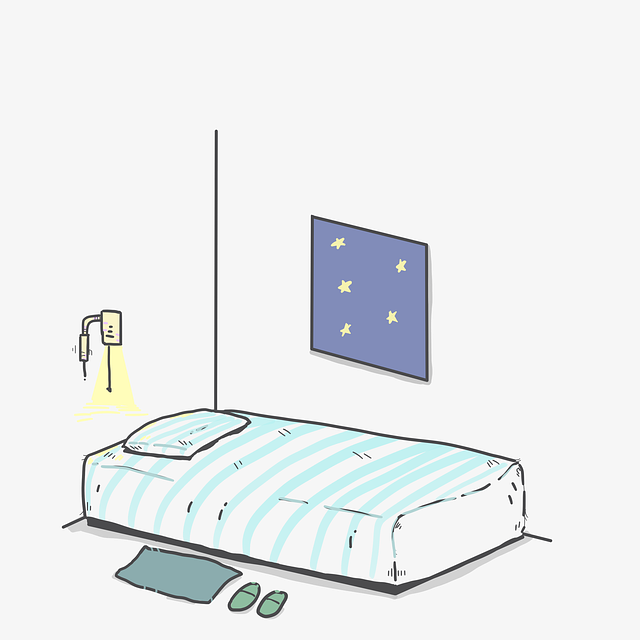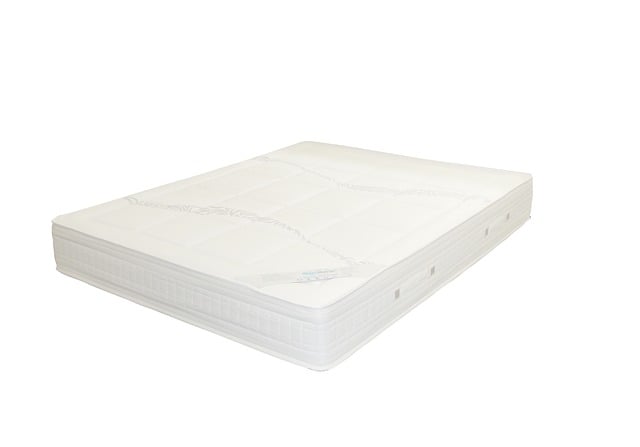Unlock Restful Nights: High-Dose Melatonin Therapy Benefits

High-Dose Melatonin Therapy is a treatment for insomnia and sleep disorders, using elevated melatoni…….
In the pursuit of optimal health and well-being, the world of sleep science has unveiled a powerful ally: High-Dose Melatonin Therapy. This innovative approach leverages the natural hormone melatonin, playing a pivotal role in regulating our circadian rhythms, to combat various sleep disorders and improve overall quality of life. As modern lifestyles present unprecedented challenges to healthy sleep patterns, high-dose melatonin therapy emerges as a promising solution, gaining global recognition and interest. This comprehensive article aims to dissect the intricacies of this therapy, exploring its mechanisms, impact, and future potential. By delving into research, real-world applications, and regulatory frameworks, we will uncover why high-dose melatonin therapy is more than just a trend—it’s a transformative strategy for sleep medicine.
Definition and Core Components:
High-Dose Melatonin Therapy (HDMT) involves administering elevated doses of melatonin, a hormone naturally produced by our bodies, to restore and regulate sleep-wake cycles. Melatonin is primarily known for its role in synchronizing our internal clocks, suppressing the production of the hormone cortisol, and promoting sleepiness. In HDMT, carefully calibrated doses of melatonin are utilized to treat a spectrum of sleep disorders, offering a natural and often non-invasive approach to improving sleep quality.
Historical Context:
Melatonin has been part of human history for centuries, with traditional medicine systems utilizing various plant sources rich in this hormone. However, its modern application as a therapeutic agent began to take shape in the late 20th century. In 1995, the U.S. Food and Drug Administration (FDA) approved melatonin as a dietary supplement, marking a significant step in its recognition as a viable treatment option. Since then, research has propelled HDMT into the spotlight, highlighting its potential benefits for insomnia, jet lag, and other sleep-related conditions.
Significance and Broader Application:
HDMT is not merely a short-term solution; it offers a personalized approach to managing chronic sleep disturbances. By addressing melatonin deficiency or dysregulation, this therapy can provide long-lasting relief from symptoms associated with insomnia, sleep apnea, and shift work disorders. Furthermore, its non-addictive nature and minimal side effects make it an attractive alternative to traditional sleeping pills, making it a valuable tool in preventive healthcare and wellness programs.
International Reach:
High-Dose Melatonin Therapy has transcended geographical boundaries, captivating healthcare professionals and researchers worldwide. Its global impact is evident in the growing number of clinical trials, published research articles, and international conferences dedicated to this topic. Countries like the United States, Europe, and Japan have led the way in HDMT research, while regions such as Asia and South America are rapidly adopting these innovations, tailoring them to their unique healthcare needs.
Trends Shaping its Trajectory:
Regional Disparities and Opportunities:
While global awareness of HDMT is growing, there are still regional disparities in its adoption and accessibility. Urban areas in developed countries tend to have better access to this therapy, while rural and underserved communities may lag. Addressing these disparities requires targeted educational initiatives and policy interventions to ensure equitable access to high-quality sleep medicine.
Market Size and Growth:
The global melatonin market, encompassing both over-the-counter supplements and pharmaceutical preparations, has experienced substantial growth in recent years. According to a report by Fortune Business Insights, the market size was valued at USD 3.4 billion in 2021 and is projected to reach USD 5.8 billion by 2028, exhibiting a CAGR of 7.8% during the forecast period (2022-2028). A significant portion of this growth can be attributed to the increasing demand for HDMT.
Investment Patterns:
The rising interest in HDMT has attracted investments from venture capital firms and pharmaceutical companies, driving research and development efforts. These investments span clinical trials, technology development, and digital health platforms. For instance, several startups have emerged focusing on personalized HDMT solutions, leveraging advanced analytics and artificial intelligence to optimize treatment outcomes.
Cost-Effectiveness and Healthcare Systems:
HDMT offers a cost-effective approach to managing sleep disorders, potentially reducing the financial burden on healthcare systems. Compared to chronic medication use or more invasive procedures, HDMT can provide long-term relief with minimal side effects, leading to lower treatment costs over time. However, ensuring accessibility and affordability remains crucial, especially for underserved populations.
Insomnia and Sleep Quality:
One of the most well-studied applications of HDMT is in the treatment of insomnia. Numerous clinical trials have demonstrated its efficacy in improving sleep quality, reducing latency to sleep, and increasing total sleep time. A meta-analysis published in Sleep Medicine Reviews (2019) concluded that melatonin significantly improved insomnia symptoms, with effects comparable to those of prescription sedatives but with fewer side effects.
Jet Lag and Shift Work:
HDMT has emerged as a valuable tool for travelers experiencing jet lag and individuals working rotating shifts. By administering melatonin at specific times, HDMT helps align the body’s internal clock, reducing symptoms of fatigue, drowsiness, and cognitive impairment associated with time zone changes and shift work schedules.
Other Sleep Disorders:
The benefits of HDMT extend beyond insomnia and jet lag. Research has shown promising results in managing sleep apnea, narcolepsy, and other hyper-arousability disorders. For example, a study published in the Journal of Clinical Sleep Medicine (2021) reported significant improvements in sleep apnea symptoms and quality of life among patients receiving HDMT.
FDA Regulation:
In the United States, melatonin supplements are generally recognized as safe (GRAS) by the FDA, allowing their sale over the counter. However, prescription forms of melatonin, especially in higher doses used for HDMT, require strict clinical evaluation and regulation. The FDA has approved specific formulations for certain age groups and conditions, ensuring safety and efficacy.
International Regulations:
Regulatory bodies worldwide have varying approaches to melatonin. Some countries, like Canada and Australia, consider it a natural health product with lesser regulatory oversight. In contrast, the European Union (EU) classifies melatonin as a medication, requiring stringent testing and documentation for its use in HDMT. International collaboration is essential to ensure consistent standards and patient safety across borders.
Clinical Trials and Evidence-Based Practice:
To establish the safety and efficacy of HDMT, rigorous clinical trials are conducted, following guidelines set by regulatory bodies. These trials involve diverse populations, ensuring that treatment benefits and risks are well understood. Healthcare professionals rely on evidence from these studies to make informed decisions, ultimately benefiting patients through personalized HDMT protocols.
Side Effects and Safety:
While generally considered safe, HDMT may cause mild side effects such as headache, drowsiness, and gastrointestinal distress, especially when doses are not optimized. Long-term safety data is still being collected, particularly for specific populations like children and the elderly. Continuous research and monitoring are essential to identify any potential risks and ensure patient safety.
Dosage and Individualization:
Optimizing melatonin dosage is a critical aspect of HDMT. Individual variations in melatonin receptors and metabolism mean that one-size-fits-all approaches may not be effective. Healthcare providers must consider factors like age, body mass index (BMI), and co-morbid conditions to tailor dosing, ensuring optimal outcomes while minimizing side effects.
Access and Equity:
Ensuring equitable access to HDMT is a global challenge. Barriers include limited healthcare infrastructure in rural areas, high treatment costs, and a lack of awareness among both patients and healthcare providers. Addressing these disparities requires policy interventions, educational initiatives, and innovative delivery models to make HDMT accessible to all those who stand to benefit.
Personalized Dosage Calculations:
Advancements in pharmacogenomics and bioinformatics are paving the way for personalized HDMT. By analyzing an individual’s genetic makeup, researchers can predict melatonin metabolism and response, enabling precise dosing from the outset. This approach promises to enhance treatment efficacy and minimize side effects.
Digital Health and Remote Monitoring:
The integration of digital health technologies will play a significant role in the future of HDMT. Mobile apps and wearables can provide real-time data on sleep patterns, melatonin levels, and treatment adherence. This information empowers healthcare providers to offer remote guidance, adjust doses as needed, and monitor long-term outcomes.
Combination Therapies:
HDMT holds promise as a component of multi-modal therapy for complex sleep disorders. Combining HDMT with behavioral interventions, light therapy, and other treatments may provide synergistic effects, addressing the underlying causes of sleep disturbances more comprehensively.
Global Collaboration and Research:
International collaboration in HDMT research is crucial to address knowledge gaps and advance the field. Sharing data, resources, and best practices will accelerate progress, ensure global standards, and ultimately improve patient outcomes worldwide.
In conclusion, melatonin therapy, particularly in its application as a personalized treatment for sleep disorders (HDMT), shows great potential in improving the lives of millions of people worldwide. As research continues to refine our understanding of melatonin’s effects and optimal delivery methods, HDMT is poised to become a cornerstone of modern sleep medicine.

High-Dose Melatonin Therapy is a treatment for insomnia and sleep disorders, using elevated melatoni…….

High-dose melatonin therapy effectively treats sleep disorders by regulating melatonin imbalances, i…….

High-Dose Melatonin Therapy, a holistic approach in Integrative Medicine, shows promise for treating…….

High-dose melatonin therapy utilizes higher levels of the natural hormone to regulate sleep-wake cyc…….

High-dose melatonin therapy uses concentrated doses (5-20mg) to reset sleep cycles for insomnia, jet…….

High-Dose Melatonin Therapy is an integrative approach using higher doses of melatonin to regulate s…….

High-Dose Melatonin Therapy is an effective approach to treating sleep disturbances and promoting ra…….

High-Dose Melatonin Therapy emerges as a promising approach for accelerated recovery from diverse co…….
